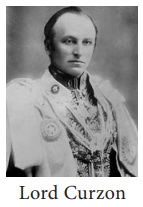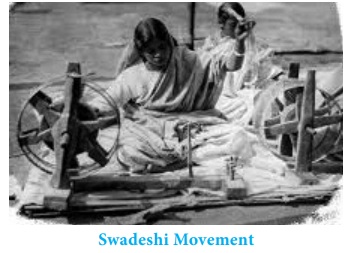Anti-Colonial Movements and the Birth of Nationalism | India - Partition of Bengal | 10th Social Science : History : Chapter 7 : Anti-Colonial Movements and the Birth of Nationalism
Chapter: 10th Social Science : History : Chapter 7 : Anti-Colonial Movements and the Birth of Nationalism
Partition of Bengal
Partition of Bengal
Partition
of Bengal in 1905 was the most unpopular of all. The partition led to
widespread protests all across India, starting a new phase of the Indian
national movement.
The idea of
partition was devised to suppress the political activities against the British
rule in Bengal by creating a Hindu-Muslim divide.

(a) Hindu–Muslim Divide
It was
openly stated that the objective of partition was to curtail Bengali influence
and weaken the nationalist movement. By placing Bengal under two administrative
units Curzon reduced the Bengali - speaking people to a linguistic minority in
a divided Bengal. Curzon assured Muslims that in the new province of East
Bengal Muslims would enjoy a unity, which they never enjoyed since the days of
the Mughals.
Instead
of dividing the Bengali people along the religious line partition united them.
The growth of regional language newspapers played a role in building a sense of
proud Bengali identity.
(b) Anti- Partition Movement
With the
failure to annul the partition moderate leaders were forced to rethink their
strategy and look for new techniques of protest. The boycott of British goods
was one such method. However, the agenda of Swadeshi Movement was still
restricted to secure an annulment of partition and the moderates were very much
against utilising the campaign to start a full-fledged passive resistance. The
militant nationalists, on the other hand, were in favour of extending the
movement beyond Bengal and to initiate a full-scale mass struggle.
The day
Bengal was officially partitioned – 16 Oct 1905 – was declared as a day of
mourning. Thousands of people took bath in the Ganga and marched on the streets
of Calcutta singing Bande Mataram.
(c) Boycott and Swadeshi Movement in Bengal (1905–1911)
Boycott
and swadeshi were always interlinked to each other and part of the wider plan
to make India self-sufficient. Four major trends can be discerned during the
Swadeshi Movement in Bengal.
1. The Moderate Trend
2. Constructive Swadeshi
3. Militant Nationalism
4. Revolutionary terrorism
Constructive Swadeshi
The
constructive programmes largely stressed upon self-help. It focused on building
alternative institutions of self-governance that would operate free of British
control. Swadeshi shops sprang all over the place selling textiles, handlooms,
soaps, earthenware, match and leather goods.

Passive Resistance
From 1906
the Swadeshi Movement took a turn. Under this new direction, the swadeshi
programme included four points: boycott of foreign goods, boycott of government
schools and colleges, courts, titles and government services, development of
Swadeshi industries, national schools, recourse to armed struggle if British
repression went beyond the limits of endurance.
Militant Nationalism
Lala
Lajpat Rai of Punjab, Bala Gangadhar Tilak of Maharashtra and Bipin Chandra Pal
of Bengal were three prominent leaders during the Swadeshi period and were
referred to as Lal-Bal-Pal triumvirate. Punjab, Bengal, and Maharashtra emerged
as the hotbed of militant nationalism during the Swadeshi Movement. In South
India Tuticorin became the most important location of Swadeshi activity with
the launch of a Swadeshi Steam Navigation company by V.O. Chidambaranar.

Swaraj or Political Independence
One of
the common goals of the extremist leaders was to achieve Swaraj or Self Rule. However, the leaders differed on the meaning
of Swaraj. For Tilak Swaraj was the attainment of complete
autonomy and total freedom from foreign rule.
Related Topics